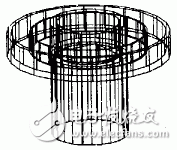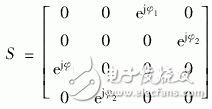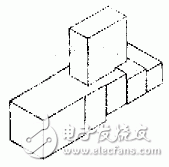In recent years, the rapid development of China's communications industry, microwave relay communication antennas have also been continuously developed and improved, the transmission network function of satellite communication systems is mainly through fiber, ground microwave, air satellite and other communication methods. From the perspective of new technologies and transmission capacity used in microwave transmission systems, the new generation of synchronous digital series SDH microwave communication systems replaces PDH microwave communication in the traditional sense. In order to adapt to the development of frequency reuse in the emerging SDH microwave communication, we need to develop ultra-high performance microwave antennas. It should have a high front-to-back ratio (F/D), a high cross-polarization discrimination (XPD) and a very low voltage standing wave ratio (VSWR). Therefore, the ultra-high performance microwave antenna system has a low voltage standing wave ratio (VSWR better than 1.06 or reflection loss greater than 30.7 dB) and a high cross polarization discrimination rate (greater than 38 dB).
Second, the system consistsThe feed system of the ultra-high performance microwave antenna is composed of a horn, an orthogonal device, a twisted waveguide, a curved waveguide and a waveguide feed line. Among them, the horn and the orthogonal device are key components.
Speaker
There are a variety of horns suitable for feeds of ultra-high performance microwave antennas [1][2]. The feed uses a planar corrugated horn with three chokes, which have a rotationally symmetric pattern, low side lobes, low cross polarization and a stable phase center. The structure of the horn is shown in Figure 1. It consists of a circular waveguide and three concentric rings. In order to improve the standing wave characteristics of the horn, we placed the matching block symmetrically near the bell mouth. In order to prevent foreign matter from entering the horn, the bell mouth needs to be closed. Usually, a dielectric film is added to the bell mouth. Generally, the dielectric film will deteriorate the standing wave of the speaker. We use high-frequency simulation software to adjust the position and thickness of the medium to improve the standing wave characteristics. The optimized horn standing wave is better than 1.05.

Figure 1 speaker structure
2. Orthogonal
In modern antenna feeder systems, frequency reuse technology is one of the most economical methods of utilizing frequency resources, which can achieve the purpose of expanding communication capacity. The orthogonal polarization frequency multiplexing technique is implemented by using a dual-polarized antenna, that is, transmitting two independent signals by using polarization orthogonality characteristics on the same frequency. There are two orthogonal polarization frequency multiplexing techniques, namely two-line polarization and double-circle polarization [3]. The synthesis and separation of orthogonal polarizations is implemented in a feed system. The two-wire polarization frequency multiplexing is performed by an orthogonal mode coupler (OMT), also called a polarization separator (referred to as an orthogonal device).
Orthogonal devices are commonly used microwave components, but there are few literatures describing their design methods [4]. A normal quadrature (shown in Figure 2), although only three physical ports, is electrically a four-port device. This is due to the fact that there are two orthogonal main modes in the common port (TE11/TE*11 mode of the circular waveguide or TE10/TE01 mode of the square waveguide) and the respective fundamental modes of the other two ports (the TE10 mode of the rectangular waveguide) Or TEM mode in the coaxial line).
The function of the orthogonalizer is to separate the independent signals of the two orthogonal main modes in the common port and pass them to the fundamental mode of the single signal port, so that all the electrical ports are matched and there is high cross polarization between the two independent signals. Discrimination. Therefore, the scattering matrix of the ideal quadrature is

Ports 1 and 2 here represent the master mode at the physical common port, and ports 3 and 4 are the base mode interfaces, for example, providing a direct connection between port 1 and port 3 and between port 2 and port 4, respectively. The phase shift hysteresis is φ1 and φ2, respectively.
There are many forms of orthogonalizers, and their performance is slightly different. Generally, the main waveguide is in the form of a circular waveguide and a square waveguide, and a four-ridge waveguide can also be used in a wide-band application. The position of the coupling hole coupled to the branch waveguide (also called the side arm) is in the tapered (gradient or step) portion and is also short-circuited by the diaphragm or the isolation barrier. The orthogonalizers described in this paper meet the requirements of high performance and low cost in a narrow operating frequency band (10% to 20%). For high performance, it requires small reflection loss (VSWR) and high isolation (port isolation and polarization isolation); low cost requires simple structure and convenient processing.
In order to ensure the performance of the orthogonal device, its minimum operating frequency should meet fmin>1.1fc. Thus, the maximum operating bandwidth of the circular waveguide orthogonal device is about 17%, and the maximum operating bandwidth of the square waveguide orthogonal device is about 25%. Orthogonal isolation performance within such bandwidth is only affected by structural size and processing symmetry. If it is greater than the maximum operating frequency, the isolation performance of the orthogonalizer will deteriorate due to the influence of the high-order mode.
The design of the orthogonality is to suppress the generation of higher-order modes, simplify the structure, ensure the symmetry of the structure, and achieve matching of each port with fewer matching components.
The key to the design of the quadrature is the structure of the square or circular waveguide branch coupler and the matching portion of the two fundamental mode ports. The orthogonalizer we designed is in the form shown in Figure 2. The size of the square waveguide is first determined during the entire design process, and then the rectangular waveguide step transition of the through port is designed. Finally, the position of the side arm coupling hole is determined. It is advisable to select the size and position of the coupling hole to minimize the influence on the straight arm and to couple the polarization signal well. Due to the large number of side arm coupling structure variables, the performance of the side arm is very important.

Figure 2 C-band orthogonalizer
48V15Ah Lithium Ion Battery,48V15Ah Lithium Battery Pack,Li-Ion 48V15Ah Lithium Battery Pack,Echargeable Lithium Battery Pack 48V
Jiangsu Zhitai New Energy Technology Co.,Ltd , https://www.zhitainewenergy.com